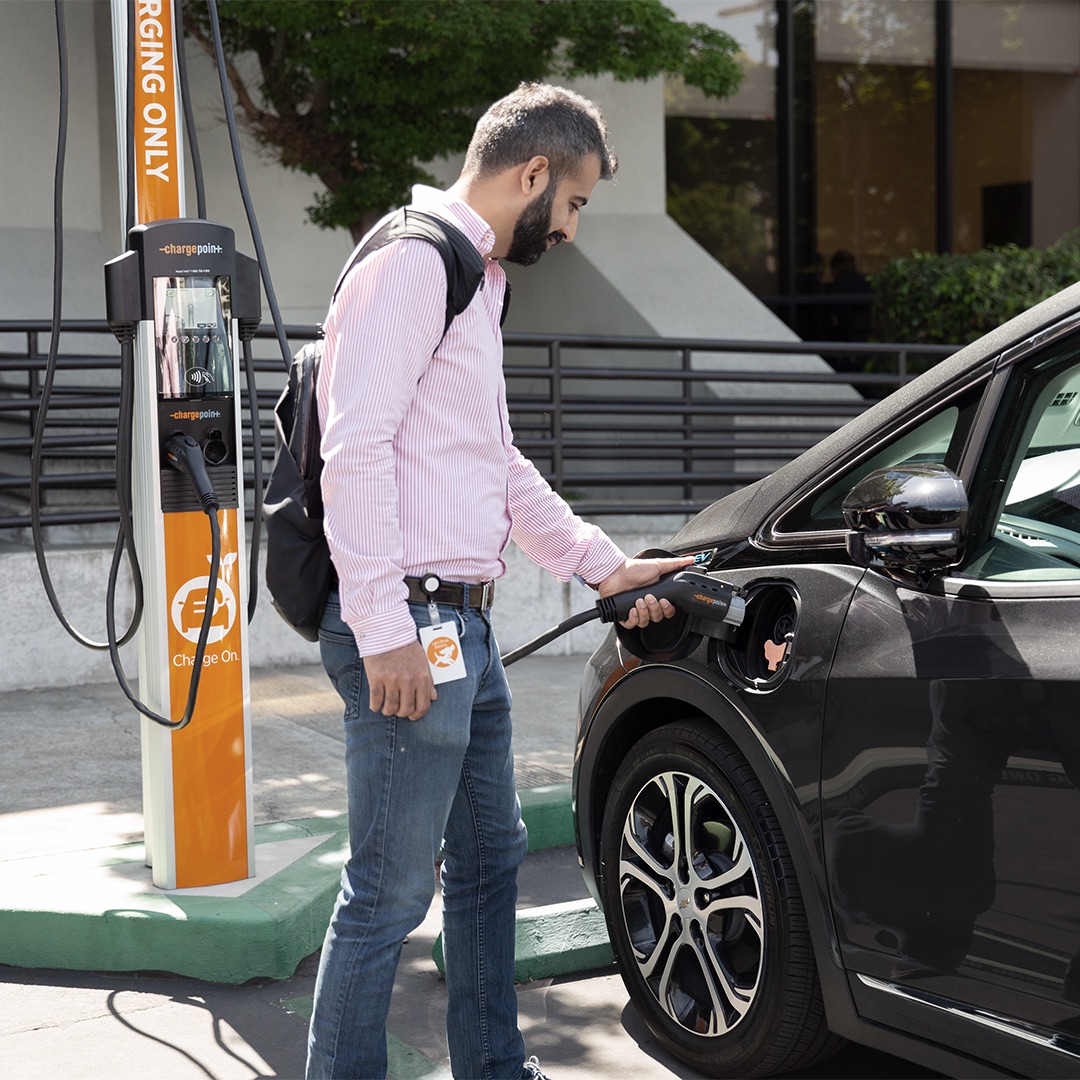EV Adoption Creates More Demand for Workplace Charging Stations
The growing adoption of electric vehicles (EVs) is increasing the demand for workplace charging stations. In 2023, workplace charging sessions grew twice as fast as new installations, highlighting a gap between demand and supply. The rise in hybrid work schedules has shifted commuting patterns, concentrating EV charging from Tuesdays to Thursdays.
Workplace EV chargers contribute to environmental, social, and governance (ESG) goals, making them a strategic asset for attracting employees and tenants. The U.S. saw a 50% increase in EV sales last year, representing 9.2% of new light-duty vehicle sales. Projections indicate U.S. EV registrations will grow at an average rate of 40% annually over the next five years. Despite this, a revised forecast suggests a near-term slowdown with a 31% sales growth expected in 2024.
ChargePoint's data shows a surge in workplace charging activity, with a 64% increase in sessions and 57% more unique drivers year-over-year. However, the availability of charging ports hasn’t kept up with demand. The pandemic has changed commuting behaviors, with vehicle traffic returning to pre-pandemic levels but public transport usage at 71% of pre-pandemic levels.
CBRE's survey indicates that 30% of companies prefer offices with EV chargers, rising to 40% among large companies. While not sufficient alone to bring workers back to the office, EV charging stations can incentivize more frequent and longer office visits.
- EV sales in the U.S. increased by 50% year-over-year.
- EVs represented 9.2% of new light-duty vehicle sales in 2023.
- Projections indicate a 40% annual growth in U.S. EV registrations over the next five years.
- Workplace EV charging sessions grew by 64% year-over-year in 2023.
- The number of unique drivers using workplace charging grew by 57% year-over-year.
- 70% of prime U.S. office buildings are now equipped with EV charging ports.
- CBRE's survey shows 30% of companies prefer offices with EV chargers, rising to 40% among large companies.
- Workplace charging sessions are growing twice as fast as new installations, highlighting a supply-demand gap.
- Revised projections suggest a slowdown in EV sales growth to 31% in 2024.
- Public transport usage is at 71% of pre-pandemic levels, indicating not all commuting issues are resolved.
- The average number of drivers per active port has increased, suggesting higher competition for charging spots.
NORTHAMPTON, MA / ACCESSWIRE / May 14, 2024 / CBRE Group, Inc.
CBRE
Executive Summary
- With more people driving electric vehicles (EVs), commercial property owners and large occupiers are installing EV charging stations as a crucial amenity. Last year, workplace charging sessions grew twice as fast as new installations, indicating an inability to keep pace with rising driver demand.
- The use of public transportation has decreased with the rise of hybrid work schedules, leading to an increase in vehicle traffic and changed commuting patterns.
- Post-pandemic workplace charging in North America became more concentrated from Tuesdays through Thursdays and in alignment with the highest office attendance days, according to ChargePoint, North America's largest public networked charging port provider.
- Providing EV charging stations at workplaces is not only vital for accommodating the rapidly growing EV market, but also contributes to achieving environmental, social and governance (ESG) goals.
New workplace EV charging installations present a major opportunity for U.S. office property owners and large occupiers. More people are driving EVs due to government purchase incentives, environmental consciousness and an expanding charging infrastructure. EV drivers charge more often than gasoline drivers fill up because they tend to top-off rather than deplete batteries, making charging at workplaces a valuable amenity.
Last year, the U.S. was one of the world's fastest-growing countries for EV sales, with sales up
Looking ahead, BNEF predicted that U.S. EV registrations will grow at an average rate of
Active workplace charging ports from ChargePoint increased by
The pandemic changed the frequency, destination and transportation mode for people commuting to work, with geographic variations. CBRE's Spring 2023 U.S. Office Occupier Sentiment Survey revealed that office workplace attendance policies became more decisive in 2023. Two-thirds of the 207 real estate executives surveyed mandated some office attendance, while only
People are using public transportation less as hybrid work schedules become increasingly common. Total U.S. public transit usage in 2023 was
Kastle Systems data shows office attendance is highest across all markets on Tuesdays through Thursdays and lowest on Mondays and Fridays. According to ChargePoint, popular workplace charging days similarly shifted from Mondays through Thursdays in 2018-2019 to Tuesdays through Thursdays in 2022-2023. Austin, TX had the most change, transitioning from relatively flat charging behavior from Mondays through Fridays to peak charging occurring on Tuesdays and Thursdays, with a significant decline on Fridays. However, charging trends vary across top U.S. EV markets. For example, more Texans than Californians charge their vehicles at the workplace over the weekend, while Californians are more likely to do so on weekdays. This is partly due to better availability of charging infrastructure away from workplaces. The average time of day to start charging sessions remained consistent with pre-pandemic trends, peaking in the morning with a smaller surge around lunchtime.
Outlook
Workplace EV charging has become a valuable amenity, with roughly
EV chargers are increasingly recognized as a strategic asset for companies seeking to draw more employees back to the office and for property owners seeking to attract and retain tenants. Workplace charging sessions accounted for
1 Registration data from U.S. Department of Energy, 2022. CBRE estimated 2023 EV registrations using sales data.
2 Includes general, government and municipal workplaces in the U.S. and Canada, but excludes retail and places open to the public.
3 National Library of Medicine. "Rush hour-and-a-half: Traffic is spreading out post-lockdown." https://www.ncbi.nlm.nih.gov/pmc/articles/PMC10499251/
4 Includes about

View additional multimedia and more ESG storytelling from CBRE Group, Inc. on 3blmedia.com.
Contact Info:
Spokesperson: CBRE Group, Inc.
Website: https://www.3blmedia.com/profiles/cbre-group-inc
Email: info@3blmedia.com
SOURCE: CBRE Group, Inc.
View the original press release on accesswire.com







